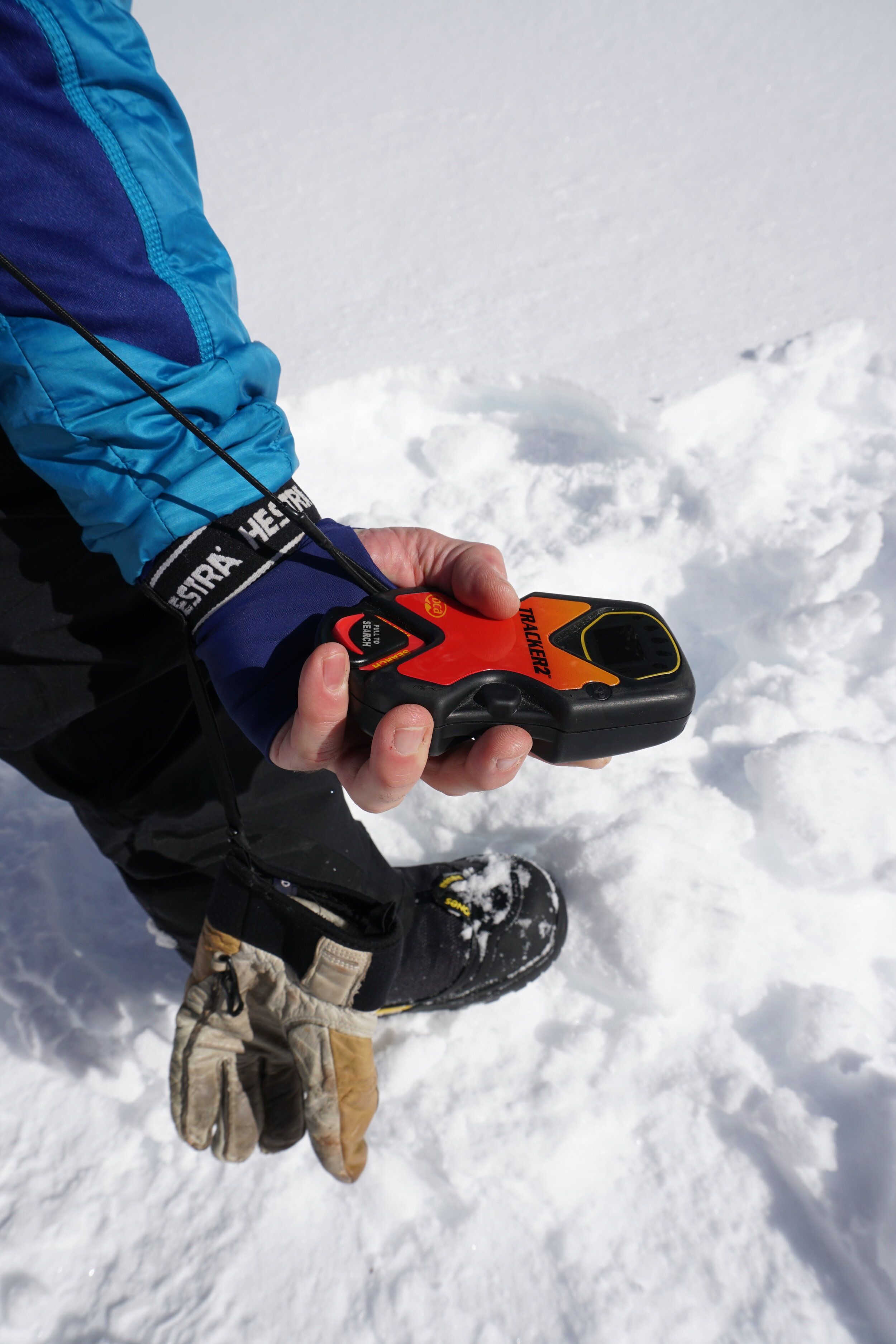Basic Rescue Techniques
For when it all goes south
It’s about the practice stupid
If you’ve made a mistake, and yes if one of your crew is in an avalanche mistakes have been made, then it’s down to you to safely get them out as quick as you can. Survival rates very quickly decline the longer you’re under the snow, so it’s essential that everybody you ride with, not only has the correct equipment, but knows how to use it efficiently when under pressure. Practise is the only way to achieve this, so take some time out of your day and set up - on snow - scenarios, until you can find a buried transceiver in well under 15 minutes.
The Stats
An avalanche happens when three things come together. One - that there’s a build-up of snow, two - it has something to slide on, and three - someone or something triggers it.
93% of avalanche accidents are triggered by the snowboarder/skier or someone they’re riding with. So it's down to you to keep safe, don’t push it on a high-risk day, you’re your own worse enemy.
If you're lucky enough to survive the ride, without a broken neck, you have around a 90% chance of survival if you’re dug out in under 15 minutes, this drops to a terrifying low 27% after 35 minutes. So the speed of rescue is paramount!
Transceivers
Avalanche transceivers must be worn by yourself and everyone you ride with. There are many different models, so buy the best one you can afford and familiarise yourself with all its functions.
On in the car, off in the bar! You should always turn on your transceiver before you start to ride, making sure you check the batteries each morning. You’ll then be sending out a signal until you turn it off, or into search mode.
If someone is buried, one person should take control - if you’re on your own that’s you, scary ain’t it. Ensure everyone switches to search mode and follow the arrows/instructions on your transceiver, slowly descending the slope so you don’t miss the victim/victims.
Probe
Once you’ve located the victim, by establishing the lowest reading with your transceiver, you will then need to probe the snow until you hit your friend/wife/husband/child. You’ll know you’ve hit them as it will feel different than the surrounding area. You start probing where your lowest reading was and work your way outwards in an ever-increasing spiral. Once you hit them leave the probe in the snow, this is essential as firstly the victim knows you’ve found them, and that you're coming to the rescue, and secondly if you take it out you will not know exactly where to dig.
Dig
Most of the time you’ll be on an incline so step down the slope at least one times the same distance the probe went into the snow, as its easier to dig straight in towards the victim than it is to dig straight down.
If you’re lucky enough to have help, employ tactical digging. One person starts to dig, with a person on either side of them clearing the snow away, enabling them to concentrate on making fast progress. You’ll be digging like a mad-thing so rotate the person at the front regularly, to help keep the pace going.
Once you get to them, clear their airway, get them warm and tackle any of their first aid needs - because you’re a first aider and you always carry a first aid kit - don’t you!
Order of Play
Shout Avalanche
If someone is taken keep eyes on them and note last place seen
All transceivers to search
Shovels and probes out
Locate victim
Probe
Dig out
First Aid
Locate next victim…
“We have met the enemy and he is us!”







